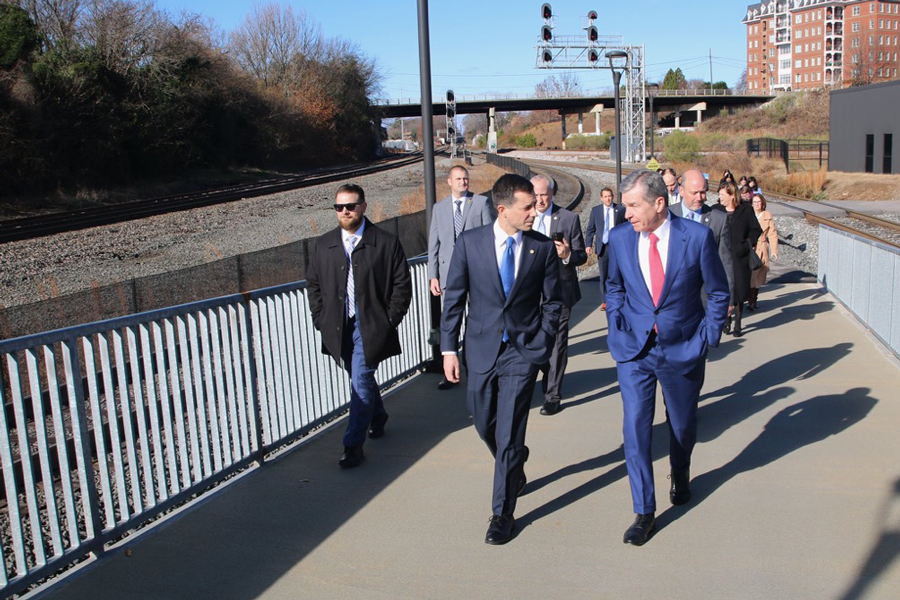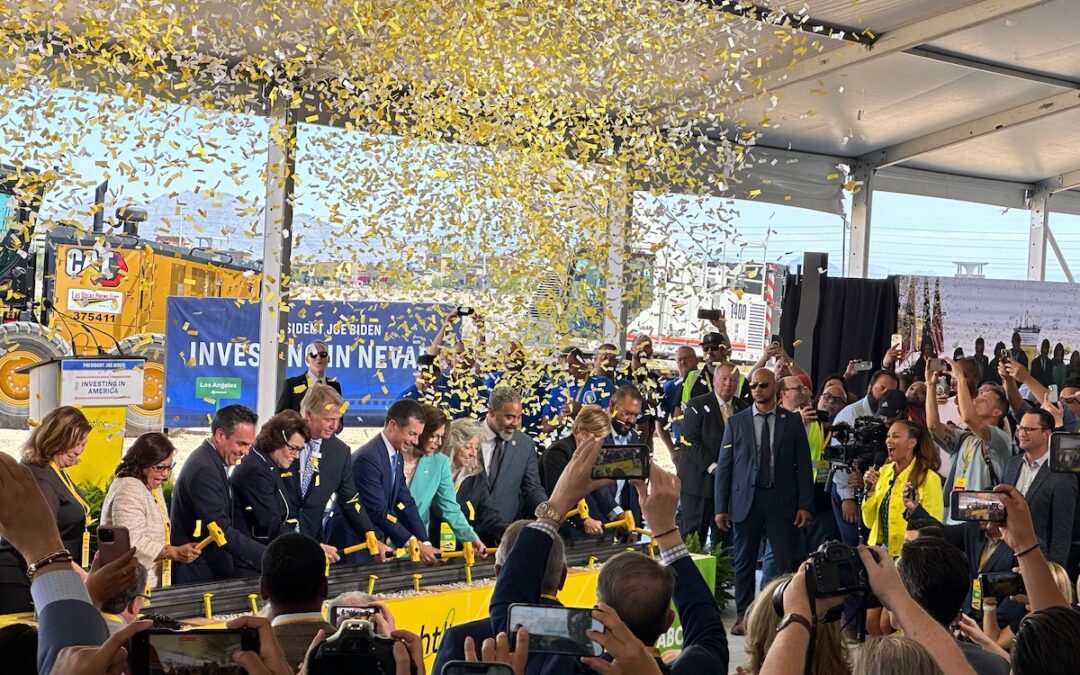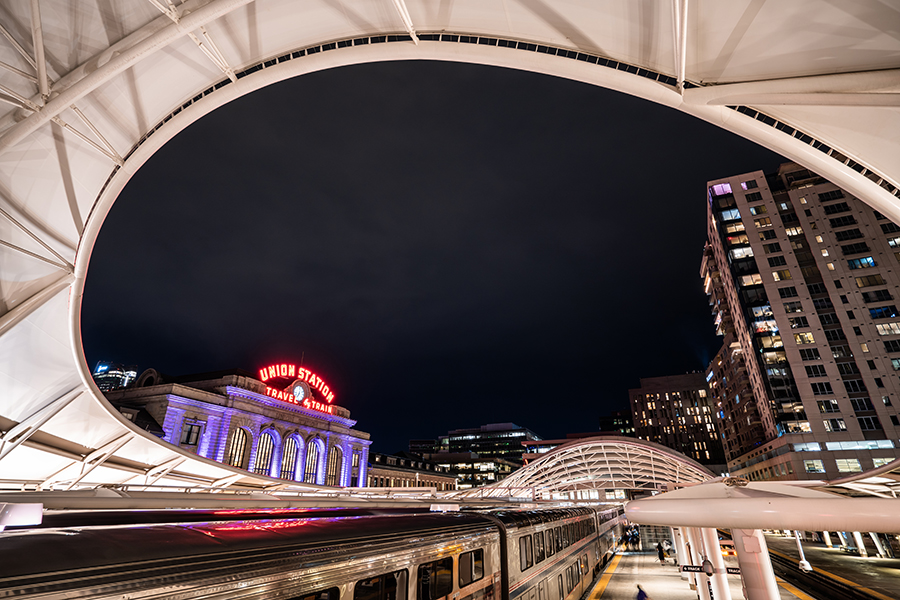The railroad Brightline today broke ground in Nevada on its new Brightline West project. Brightline will use trains traveling up to 200 miles per hour to cut the travel time between Las Vegas and Los Angeles in half. The company already operates successful trains...
The $8.2 billion in grants for train projects got most of the spotlight in the recent blockbuster announcement by the Federal Railroad Administration. But the FRA’s new Corridor ID program will be even more pivotal in creating a national network of high-speed trains across the US.
The FRA named 69 projects across 44 states for inclusion in Corridor ID’s initial round. New applications will be reviewed on a roughly annual basis. Proposed projects must have a sponsor—typically Amtrak, a state, or a coalition of local government entities.
Big-picture, Corridor ID accomplishes three crucial things:
- Creates a process for agencies to apply for and be awarded federal grants for planning railroad projects.
- Gives relevant agencies and Congress a tool to evaluate the priority and overall value of proposed projects.
- Builds a foundation for the Federal Railroad Administration to plan a national network of fast, frequent, and affordable trains. As the FRA notes, Corridor ID is a comprehensive planning and development program “that will help guide intercity passenger rail development throughout the country and create a pipeline of . . . projects ready for implementation.”
See the full list of Corridor ID awards
Nuts and bolts
Seven of the projects accepted in the first round are high-speed rail—including California’s LA to San Francisco line and Brightline West’s line from Las Vegas to the LA Basin. Of the 62 conventional train projects, 15 propose upgraded service on existing lines; 13 propose extensions to existing lines; and 34 propose new lines. Examples include new service between the Twin Cities and Duluth (MN), between Phoenix and Tucson, and between Baton Rouge and New Orleans.
Corridor ID does not fund actually construction, but it moves projects to the implementation stage through a three-step process.
Step 1 involves the preparation of a scope, schedule, and cost estimate for developing (or updating) a service development plan (SDP).
Step 2 involves creating or updating the SDP. Among other things, an SDP lays out various alternatives in terms of routes, speeds, frequencies, and station locations, etc.; discusses potential environmental impacts/benefits; and describes how the corridor “would contribute to the development of a multi-state regional network of intercity passenger rail.”
Step 3 involves completing the environmental and engineering reviews required for the project to move to the construction phase.
Each project accepted into step 1 of the program receives $500,000. The funding varies in step 2. Sponsors must secure a 10-percent cost share from a public or private source to move to this stage.
Take Action
Ask your Governor to think big and plan for success with the state’s new corridors.
Why your involvement—now—is critical
The 10 percent cost share creates a big opening and powerful leverage point for train advocates.
Most projects accepted into Corridor ID recently are still at step 1. That is, sponsors are making a plan to make a plan.
In Step 2, they will create an actual service design plan. Since these SDPs have not yet been created, advocates can play a decisive role in what they become. The main tools for doing so are state legislatures—which will be the source of the 10 percent cost share, in most cases—and the pull exerted by governors, business and civic leaders, and opinion makers.
If they hear our demands early and often, we can directly shape the SDPs that emerge from this process. Input and pressure from advocates will raise the bar for the proposed service—higher speeds, more frequency, etc.—and help ensure the development of a big-picture plan to integrate passenger-train, transit, and bus systems at the state and regional levels.
And that’s how a national network will emerge. Each corridor will bring us closer to nationwide connectivity—route by route, region by region.
When high-speed trains and high-quality conventional trains offer great service in the dozens of corridors in the Corridor ID program, the momentum for linking them together—in a truly coast-to-coast network—will be unstoppable.
So, there’s much work still to be done. But this is the best and most direct path we’ve ever had to achieving our goals. As projects move toward step 2, we need to mount aggressive, targeted campaigns for fast, frequent, and affordable trains across America.
That will be our priority over the coming years.
We will have more, soon, on the specifics of how you can be involved. For now, here are two ways.
First, please take a look at the full list of corridors added to the program in the initial round. Then, contact your governor here. If you live in one the relevant corridors, please mention it—and tell them you want the state to build on this success by creating an ambitious service development plan in step 2 of Corridor ID. If not, please tell them it’s time for your state (and region) to get up to speed and start planning for high-quality train service.
Second, please donate to the Alliance. Our work depends entirely on your efforts and contributions. The earlier we can initiate targeted campaigns and add new capacity, the greater our impact will be—and the sooner we’ll have great train service. That is one thing that’s still powerful enough to bring all of America together.
The Latest from HSRA
Our Latest Blog Posts
Check out the latest news, updates, and high speed rail insights from our blog!





